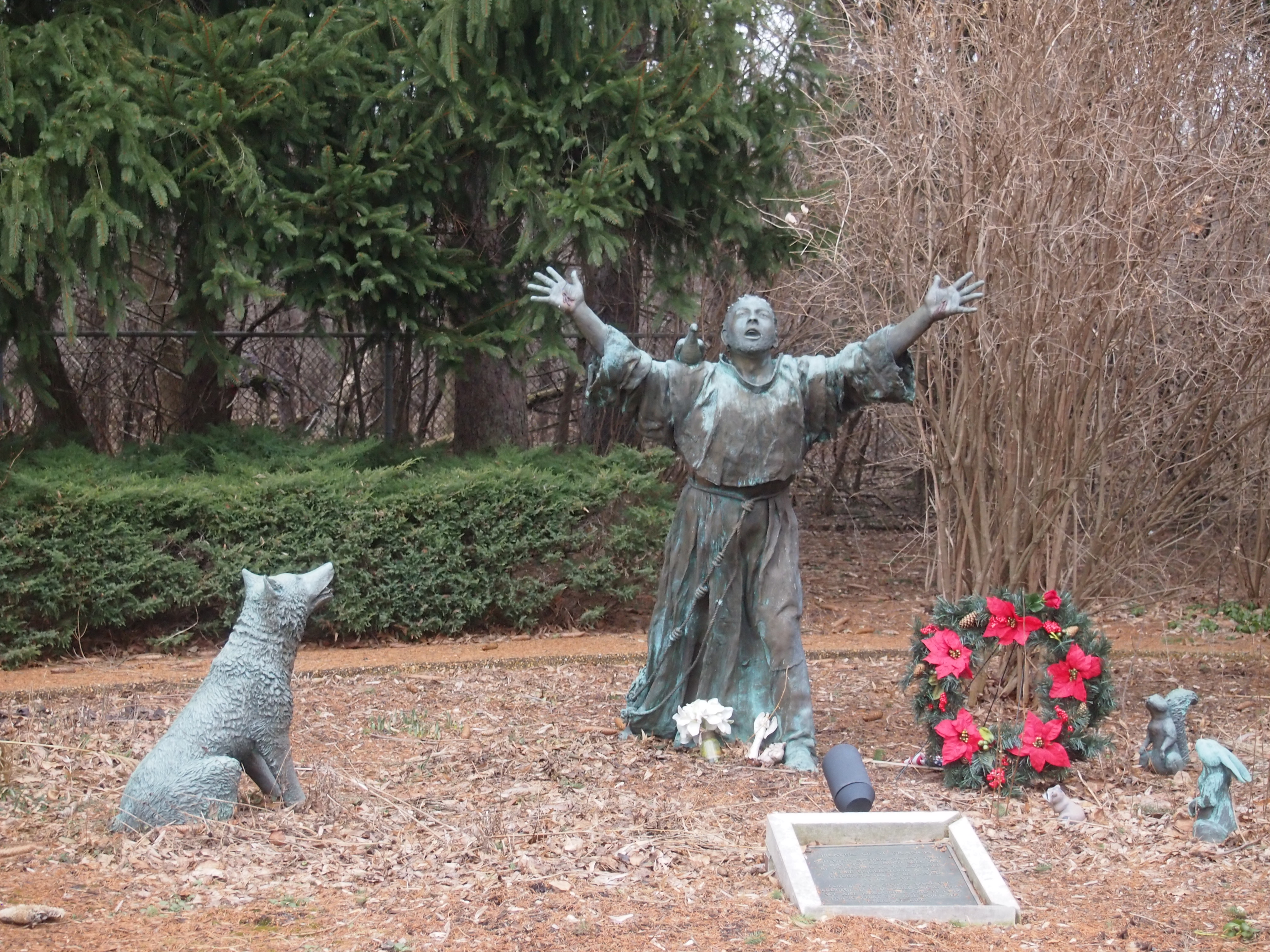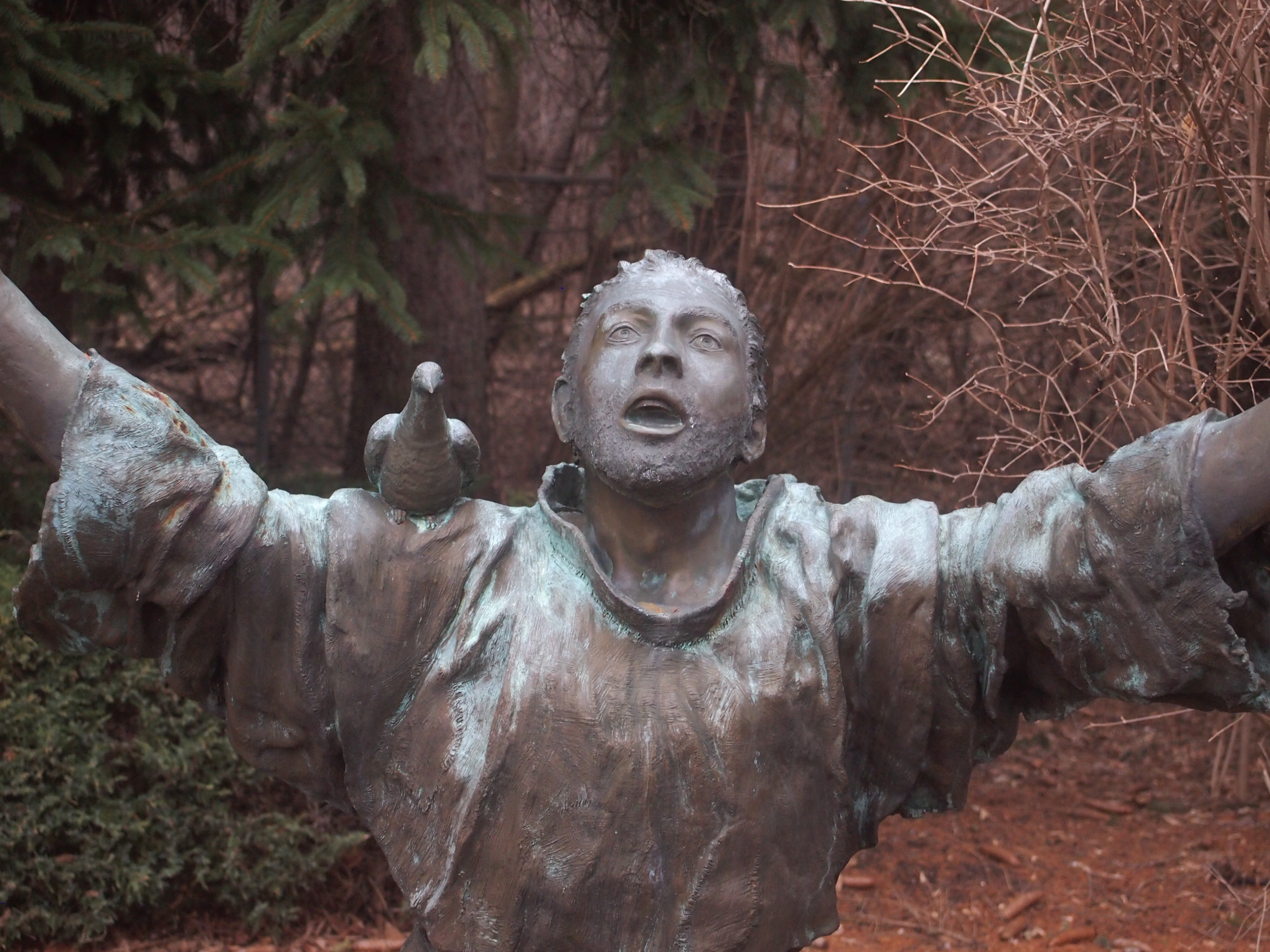Everyone else had something to do Saturday afternoon, so I took advantage of the fact that winter isn’t particularly bitter right now — and neither snow nor ice is covering the ground — to buzz up to Lake County, Ill., for a few hours. I wanted to visit a spot on the map there I’ve seen for years but never gotten around to: Marytown. Or, the National Shrine of St. Maximilian Kolbe.
A Polish Franciscan, St. Maximilian Kolbe was murdered by the Nazis. We’d come across a memorial to him before, at Our Lady of Mount Carmel Monastery in Munster, Ind. There he was a supporting player, so to speak. At Marytown, he’s the star of the show, after only Jesus and Mary.
The Marytown complex includes a Franciscan friary, a retreat and conference center, various outdoor shrines and a rosary garden, and a gift shop (where I bought postcards). It’s also home to the Marytown Press and is the American HQ for the movement that St. Maximilian Kolbe started, the Militia Immaculata.
For the purpose of my visit, however, Marytown is home to Adoration Chapel of Our Lady of the Most Blessed Sacrament. That’s what I’d heard was worth seeing, and it was. Here’s the exterior.
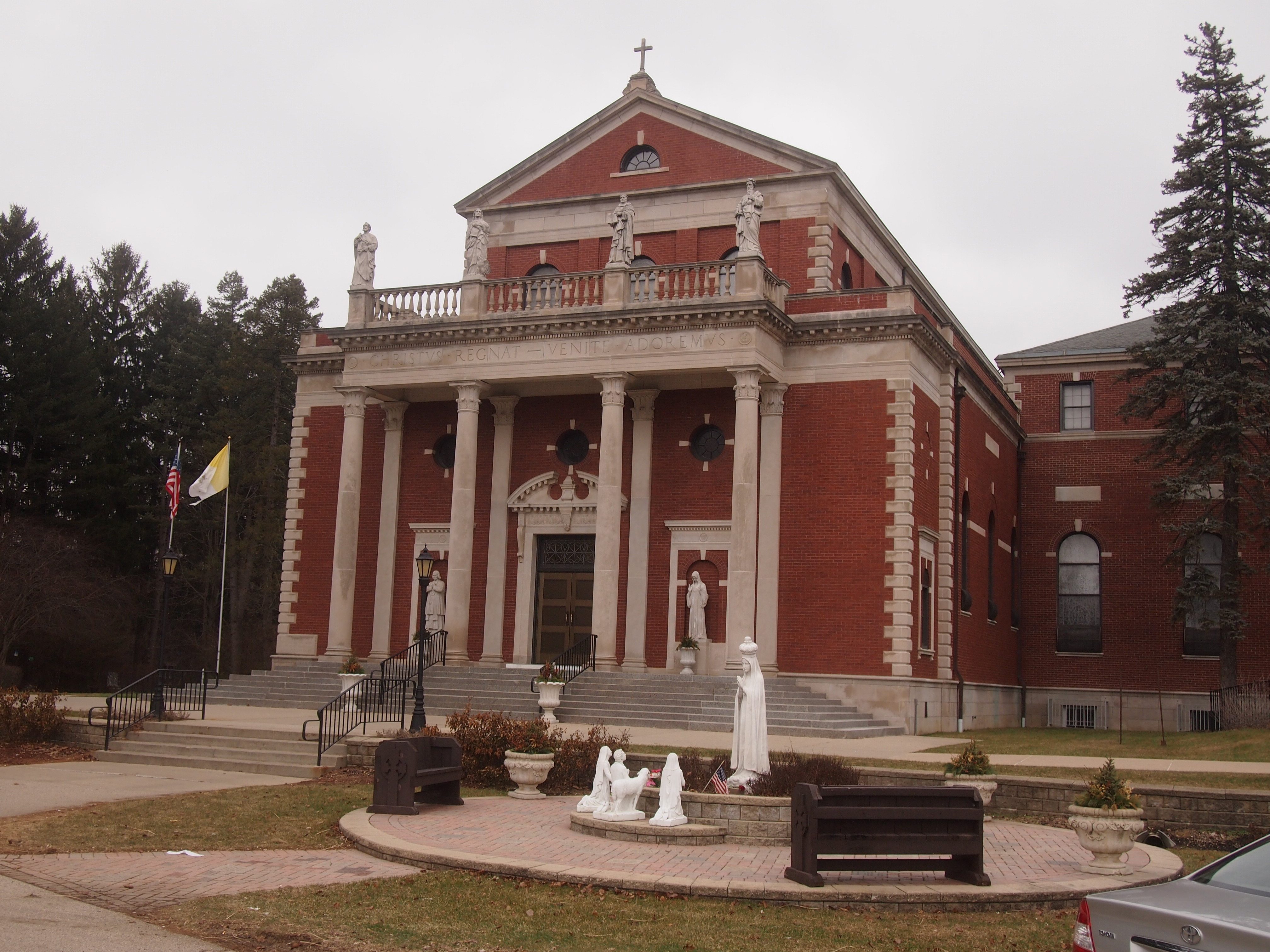 The chapel, completed in 1930, was designed by architect Joseph W. McCarthy, who trained under Daniel Burnham and did a lot of Catholic churches in the Chicago area. I’ve read it was patterned after St. Paul’s Outside the Walls in Rome.
The chapel, completed in 1930, was designed by architect Joseph W. McCarthy, who trained under Daniel Burnham and did a lot of Catholic churches in the Chicago area. I’ve read it was patterned after St. Paul’s Outside the Walls in Rome.
“The Benedictine Convent of Perpetual Adoration in Mundelein, known today as Marytown, was a special project of Cardinal George Mundelein, meant to keep alive the spirit of the 1926 Chicago Eucharistic Conference and provide for the spiritual needs of diocesan priests and seminarians at the newly built seminary next door,” writes Denis Robert McNamara in Heavenly City: The Architectural Tradition of Catholic Chicago.
This is the interior of the main chapel, as best as I could make an image. A fine combination of stained glass, mosaics and marble.
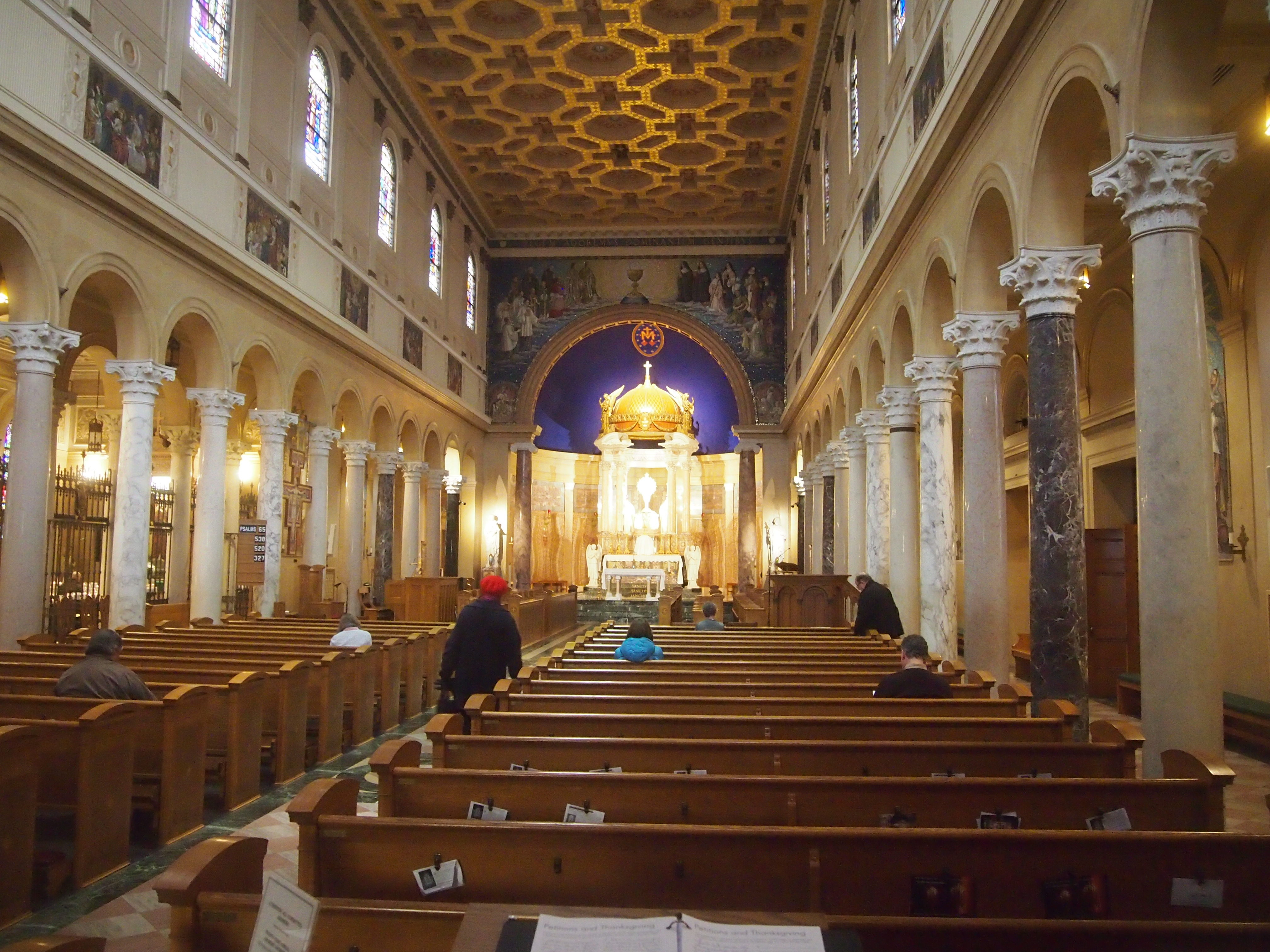 “The Benedictine Sisters maintained unbroken adoration of the Blessed Sacrament until they withdrew from the location in 1977, handing the complex over to the Conventual Franciscan Friars,” McNamara writes. “The Franciscans renamed the site Marytown and established the national shrine of St. Maxmilian Kolbe…”
“The Benedictine Sisters maintained unbroken adoration of the Blessed Sacrament until they withdrew from the location in 1977, handing the complex over to the Conventual Franciscan Friars,” McNamara writes. “The Franciscans renamed the site Marytown and established the national shrine of St. Maxmilian Kolbe…”
One of the Adoration Chapel’s side chapels features is a mosaic stretching toward the ceiling of St. Maximilian Kolbe rising triumphant from Auschwitz. Right below it are some relics of his, which include beard hair — cut some years before he died in a place that would leave no earthly remains — a piece of a habit, a prayer book.
Outside the chapel, in the garden nearby, St. Francis makes an appearance in bronze, unsurprisingly, singing the Canticle of the Sun.
With a non-human audience.
There are some other statues nearby and a rosary garden, which I’ve never encountered before. Or maybe never realized I’d encountered one before, since they seem to be fairly common.
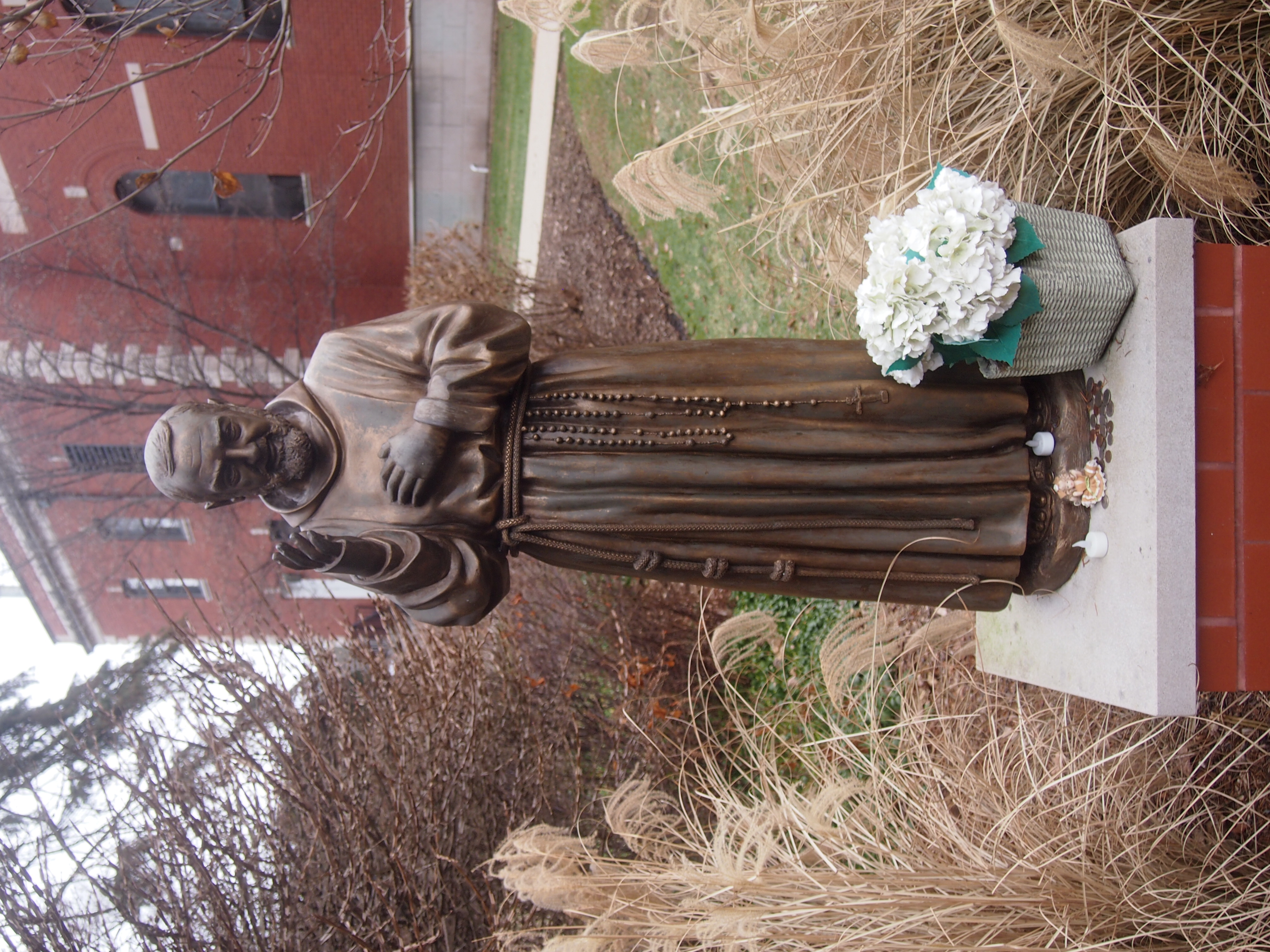 Much of the statuary was short on labels, so I’m not certain who this is supposed to be, though I’d guess an older St. Francis.
Much of the statuary was short on labels, so I’m not certain who this is supposed to be, though I’d guess an older St. Francis.
